Knowing what you are doing when it comes to a full on BBQ is quite an essential thing. BBQs are the way of life for many Americans and as time goes on any party you throw in the great outdoors might render you to need to pull that grill or smoker out of the garage and finally get cracking on a delicious BBQ. If you really want to become the pro of a fantastic, smashing BBQ party then you should brush up on this article. This article gives you the lowdown and information on extremely common BBQ terms that are often thrown around. Cracking down and learning these terms may be of extreme use in helping you understand the various methods and factors of a successful BBQ and can help you make some serious impressions on your guests or family members. Take a look at these glossary of BBQ terms to get you a little closer to that pro status level.
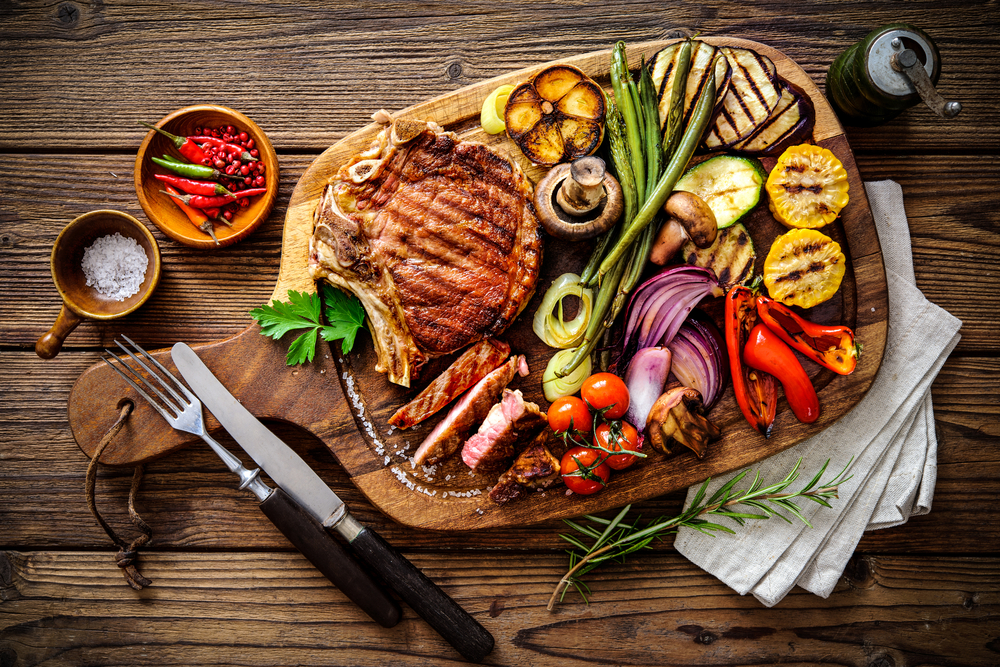
Black and Blue – This term refers to meat that is very cooked on the outside but not so cooked on the inside. In reference to this term, black and blue refers only to red meat that is cooked and charred on the outside but carries a ¨blue¨ color on the inside, which basically refers to the red meat as being extremely rare. Let us hope you never have to experience this term at a BBQ party, especially your own!
GBD- So now that I gave you a BBQ term that refers to something very bad in the art of BBQ, let me throw out a BBQ term that is used to represent very good meat in the BBQ world. GBD refers to the three words – golden, brown, and delicious. This is the ultimate motto for a successful BBQ and a term you should strive to hear at your own BBQ party or get together.
Lump – Lump is a BBQ term that is used commonly by those who are pro and serious when it comes to barbequing. It references burning wood that contains no additives or by products such as sawdust. The reason for this charcoal being favored over others by pros is due to the fact that the wood tends to burn longer, is hotter, and contains a more flavorful smoke that is advantageous for cooking meat.
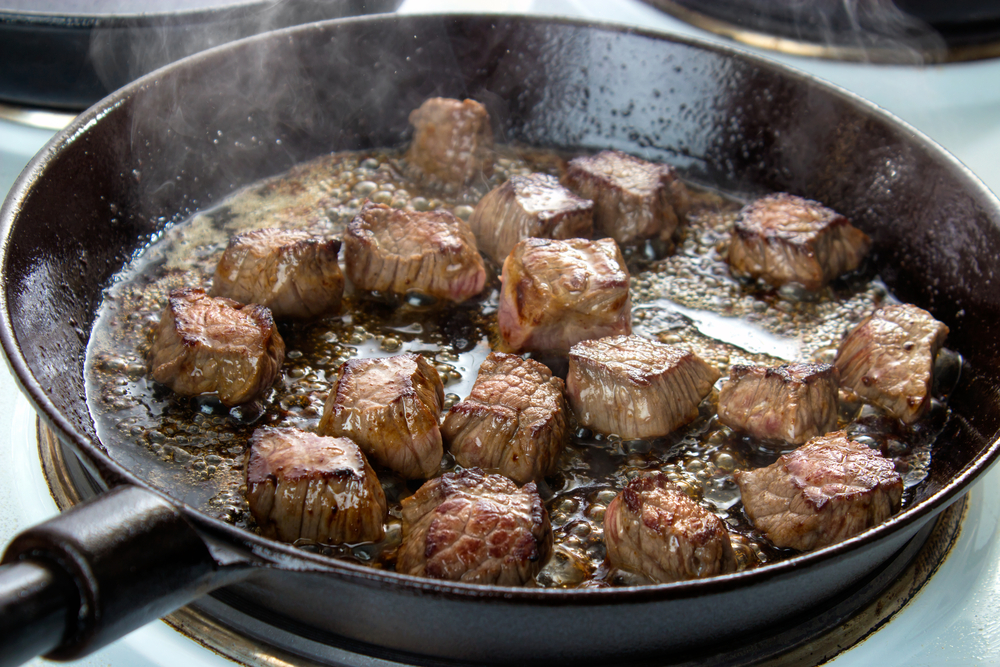
Sear – Many people see this word being used commonly in not just barbequing but cooking in general. They use this word when referring to cooking steaks or other pieces of red meat, but do you actually know the in depth meaning of what sear means? Don´t worry. I´ve got you covered! Sear actually refers to caramelizing the outside part of meat on a hot surface or open flame. Contrary to popular belief, searing a piece of meat does not actually mean cooking it. When searing meat, you never flip it, rather you let the meat sit on the surface for the heat to do all the work. One good way of knowing when the meat is ready to be flipped over on its side is by testing whether the meat sticks to the surface or not. If the meat does stick to the surface than it is not ready to be flipped. Once the meat detaches from the surface than you are ready to flip it.
Tenderize – Tenderizing is another word commonly used in the world of BBQ. Tenderizing meat refers to making the meat more tender which produces many advantageous benefits. Tenderized meat makes it easier for cutting and chewing (which will make your BBQ guest very happy). Ways of tenderizing meat often resort to using a marinade that contains citrus, acid, and enzyme rich ingredients. This can include ingredients such as wine and ginger that will easily be absorbed by the meat. A second way of tenderizing meat can also be through pounding the meat with a mallet.

Baste – The word basting and what it means is a pretty easy concept that one should take advantage of in order to produce more flavorful meats. Basting is the concept of keeping your meat juicy and tender by brushing various flavorful liquids on it such as pan drippings, fruit juice, butter, or other liquids.
Rub – Rubs are spices, herbs, and seasonings that are either rubbed on the meat (wet or dry), and helps to enhance the flavor of your meat. Typical rubs include paprika, salt, sugar, garlic, black pepper or chili pepper. The way rubs are applied though vary and that can depend on the type of meat you are using. Some rubs are applied thinly or thickly. Others are applied right before cooking or overnight. Take advantage of rubbing! It is really crucial for making the best BBQ meats out there and it makes a serious difference.
Membrane – The bone side of ribs tends to have a thin layer known as the membrane or pleura. Removal of the membrane is critical for good ribs because this thin layer is tough and often prevents the meat from absorbing the marinade or rub, and no marinade or rub absorption means tasteless meat that will make your guests extremely disappointed.
Shiners – Shiners are not a good thing when it comes to choosing and selecting ribs for smoking and grilling. Shiners is a term that refers to racks of ribs that are trimmed way too closely to the bones. When this happen the bones ¨shine¨ against the meat. These are ribs that you want to stay away from because they tend to break away more easily and have been aggressively trimmed in a way that will not be ideal for BBQs.
The Stall – The nightmarish reality that a fellow BBQ person never wants to ever experience. It is the experience in which a person smokes a brisket while the temperature of the smoker and grill have appeared to peak. The worst part is that while the temperature has peaked, the meat is extremely undercooked and the temperature is nowhere near the temperature it should be. Truly a devastating loss that no person wants to experience, especially when they have spent so much money and time. Cross your fingers you take the necessary steps to ensure that never happens!
Brine – Brine is an essential step for making the most successful, moisturize filled, and flavorful meat. A brine consists of water with salt, but sometimes can also include other liquids and spices for more flavor. Sometimes they can also have sugar as an ingredient for the brine. A good rule of thumb that is good to take into consideration is soaking meat into brine for about 30 minutes. Do this for about every pound of meat. It is good to make sure that the brine is never warm and must always be chilled before being put on the meat. This is to prevent bacteria growth.
Bark – Bark is something that commonly forms around meat. It is a brown, crunchy crust that is the result of the cooking process for meat. The crust is generally from the rub that is on the meat.
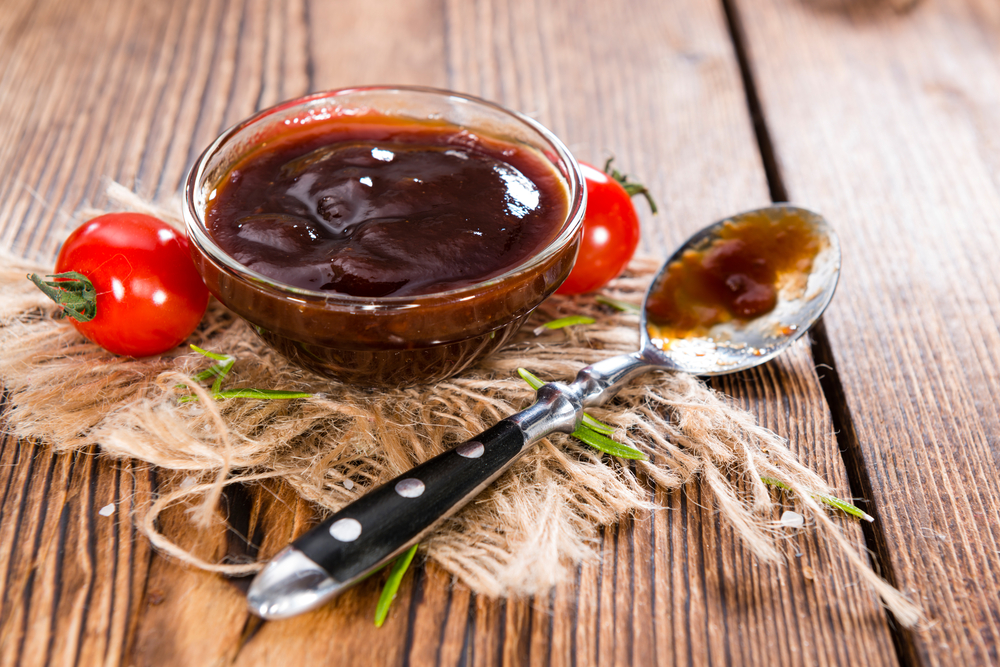
Mop Sauce – It is a sauce that is often brushed on meat while it is cooking. This happens especially when it is on an old fashioned direct heat pit. It helps to keep the surface cool and helps to add flavor. The common mop sauce includes black pepper, red pepper flakes, and hot sauce. Nowadays though various ingredients are added into it such as beer, apple juice, or soft drinks such as Dr.Pepper.
Smoke Ring- Smoke rings are bright pink lines of meat that are just below the surface of the meat. The pink lines of meat appear as a result of the fluids of the meat come in contact with the compounds that occur from the combustion gases of the smoker. Many different methods and cookers produce smoke rings such as, propane and charcoal cookers, and log/wood burning cookers. It appears that electric smokers do not make smoke rings.
Flare Up – A flare up occurs when a flash of fire happens due to natural juices falling on hot burners. This happens commonly when you cook meats that contain a high fat content. This includes burgers and spare ribs. When cooking meat like this it is best to keep the lid on the griller, to prevent these flare ups from happening. In addition it is advantageous to keep the lid on your griller because it helps to cook the meat a lot faster.

Maillard Reaction – The Maillard reaction is a natural reaction that occurs in all cooking. Maillard reaction occurs when the denatured protein off the surface of the heated meat recombines with the sugar present. This is what gives meat that meaty flavor and causes meat to brown. For that reason the Maillard reaction is also known as the browning reaction. Typical temperatures for the Maillard reaction to occur is around 300 degrees Fahrenheit to 500 degrees Fahrenheit.
Skin ´n´ Trim – In simple terms this is when you remove the membrane from the meat. You can skin it yourself or you can have a butcher cut the skin off. Once you cut the skin off, make sure to cut off any excess fat or loose flaps of meat. As stated before, the membrane is not good for cooking meat because it blocks the rub from being absorbed by the meat.
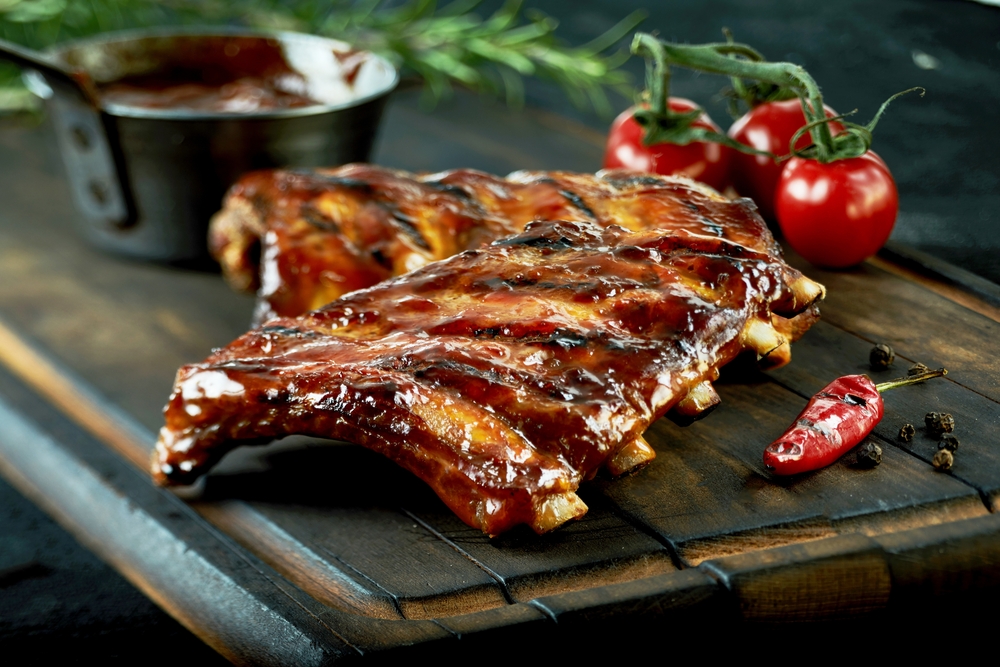
Bend Test – The bend test is a very useful test that you should do if you are cooking ribs. To perform the test you should hold the rack of ribs by a pair of tongs. You will know that the meat is ready to eat if the slab begins to bend and the meat begins to fall from the bone. If it does not do that than your ribs are not ready to eat and needs more time to cook.
Burnt Ends – Burnt ends is a term used by people in Kansas and has now been used by many people around the country. They refer to the crispy ends of the beef brisket that are drier than the rest of the cut. They are also more smoky than the rest of the cook. These burnt ends are very yummy to eat with beef brisket. Sometimes in Kansas they are smothered with barbeque sauce and served on white bread.
Resting – It sounds like you should always eat your meat right after you take it off the grill so that you can enjoy it while it is nice and piping hot, but actually it is actually better to always let your meat rest. When you let your meat rest after taking it off the meat, it allows the juices of the meat to be reabsorbed by proteins. This is very important because it keeps the meat from drying, makes it taste even better, and it doesn´t leave a sort of gross, wet puddle under the bottom of your meat when you serve it.
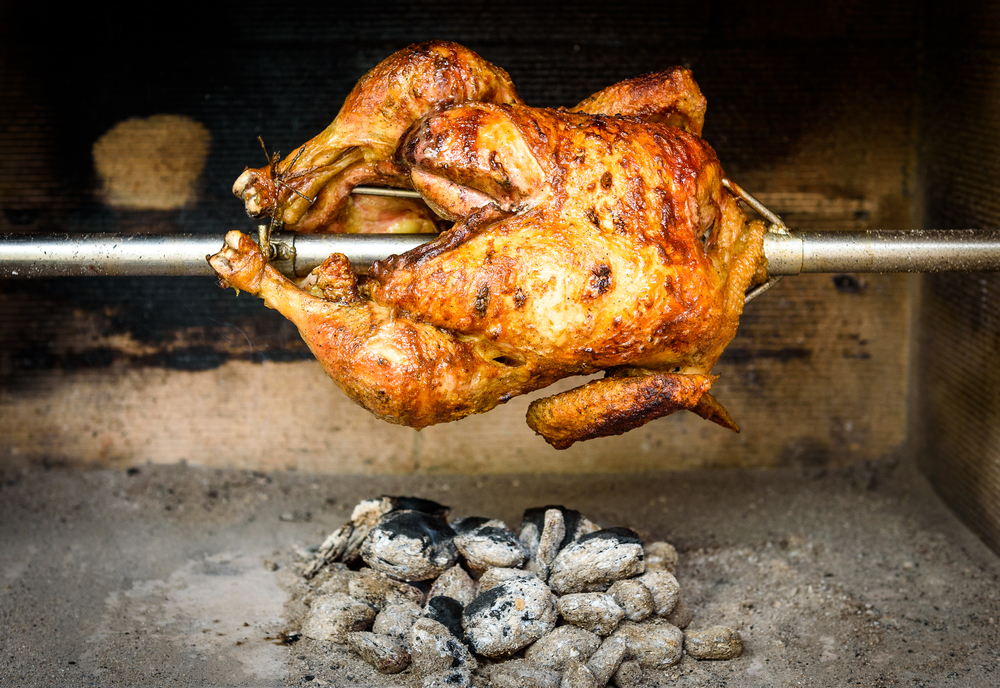
Rotisserie – Rotisserie refers to a long metal skewer or spit that has meat on it and rotates near a heating source to heat and cook the meat.
Rib Tips – Rib tips refer to the breast bone at the top of a slab of spare ribs.
Yardbird – Sounds like an alien type of meat, but actually yardbird literally just refers to chicken. The term yardbird came about in the world of BBQ due to the fact that chickens would often frolic around the yard before being caught and cooked.
These are just a few of the tons (and I mean tons) of BBQ glossary and terms thrown around often between BBQ pros. Hopefully brushing up on these common terms and understanding their concept and definition will not only help with impressing your friends and family, but will also come to aid you in understanding what to do and what not to do when it comes to barbequing. Take these definitions into consideration when you are throwing a BBQ with family or are so confident in your BBQ skills that you decide to invite the neighborhood, coworkers, friends and more! No matter the people, brushing up on these terms will make you ultimately confident in what you can do with a grill.
